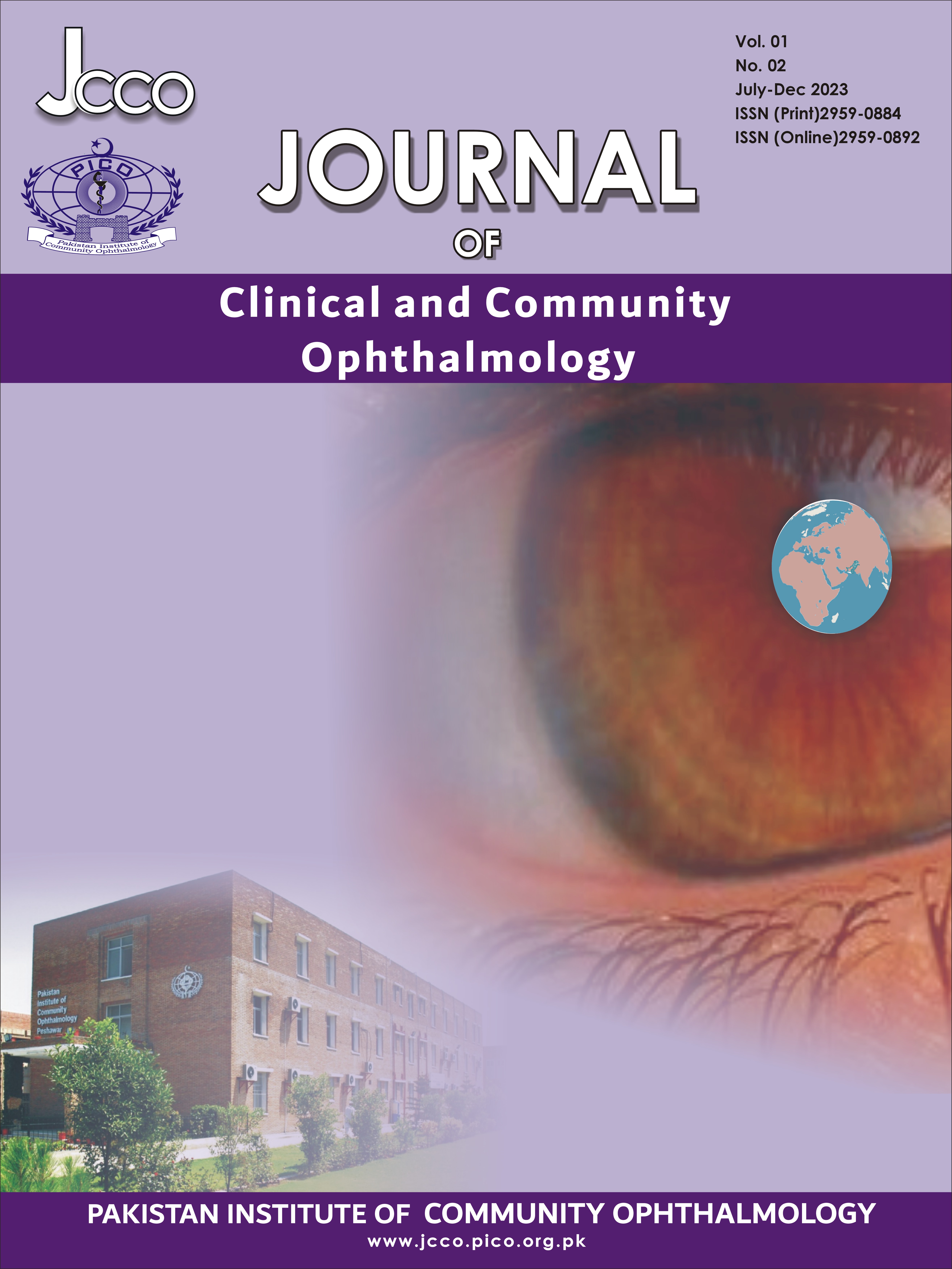Frequency and Causes of Uniocular Amblyopia in Children
DOI:
https://doi.org/10.71177/jcco.v1i02.19Keywords:
Amblyopia, Refractive Error, Strabismus, Visual AcuityAbstract
Aim: To determine the frequency and causes of uniocular amblyopia in children age 6-14 years visiting a tertiary care hospital.
Study Design: Cross-sectional hospital based study.
Duration and Settings of the study: The study was conducted from 7October to 7November 2019 in the Department of Ophthalmology at Hayatabad Medical Complex , Peshawar.
Methods: All children of age 6-14 y ears of bot h genders were included in the study. Visual acuity (VA) of these children was measured using Snellen visual acuity chart. Objective refraction was done using autorefractometer. After subjective refraction, an y two lines difference in VA of both e yes, were considered as uniocular amblyopia. Amblyopia was classified as mild if visual acuity is 6/ 9 t o 6/ 12, moderate amblyopia if VA is worse than 6/12 to 6/36, and severe amblyopia if VA is worse than 6/36. Analysis of data was done by using SPSS version 20.
Results: Out of total 360 children examined, 39 had uniocular amblyopic . Out of these 39 children, 23 (58.97%) were male and 16 (40.03%) were female. Among 39 uniocular amblyopic children, strabismic amblyopia was found in 15 (38.4 6%) children and 10 ( 25.46%) children had an isometropic amblyopia. Fourteen 14 (35.89%) children had combined amblyopia (having strabismus and an isometropia both). Among the total uniocular amblyopic children, 21 (53.85%) were esotropes, 8 (20.51%) were exotropes and 10 (25.64 %) had straight eyes.
Conclusions: This study showed that uniocular amblyopia is more common in male. The most common cause of uniocular amblyopia is strabismic amblyopia.
Downloads
Published
How to Cite
Issue
Section
License
Copyright (c) 2023 Shazia Gul, Maria ,Farrakh Tariq, Salah Uddin, Mukhlis Razzaq

This work is licensed under a Creative Commons Attribution-NonCommercial 4.0 International License.






